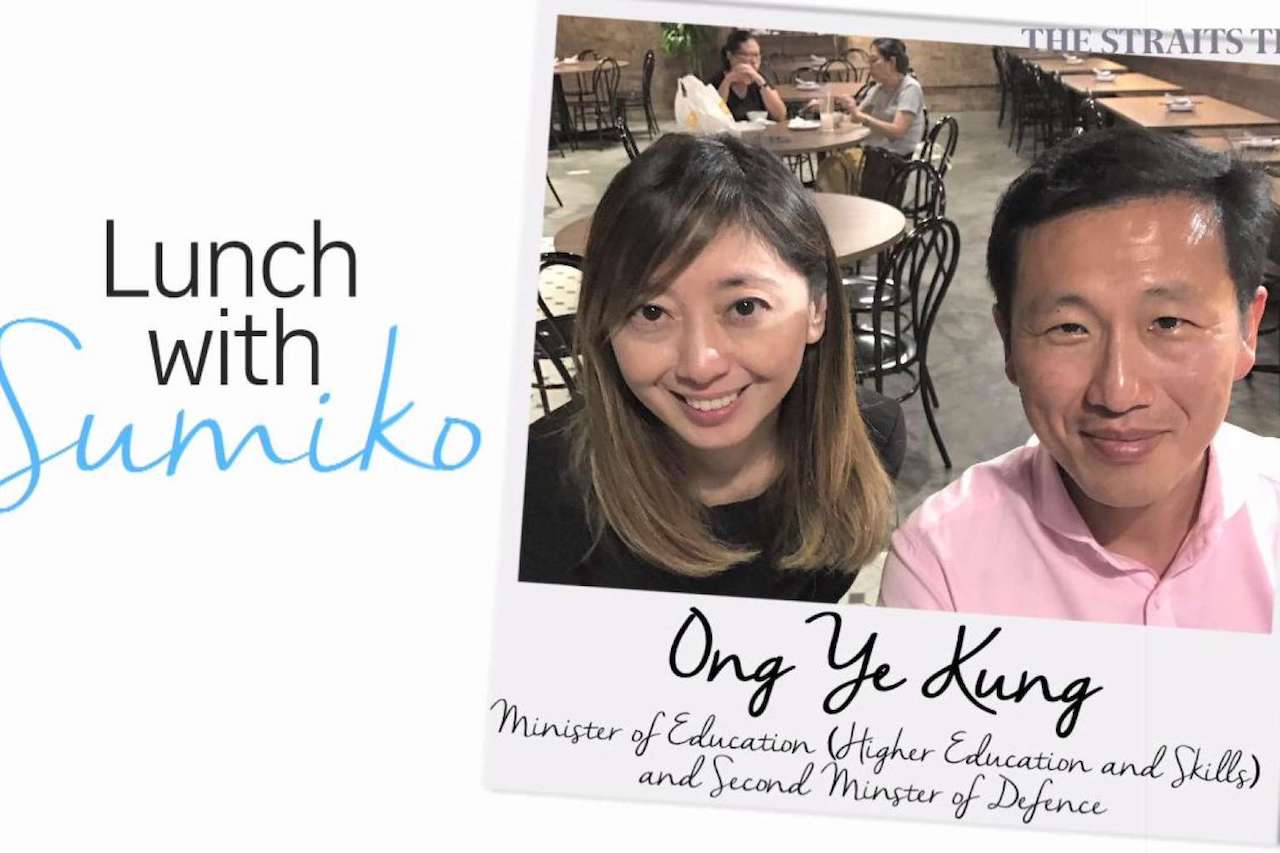Image credit: The Straits Times
As The Straits Times continues its struggle to re-invent itself, its executive editor appears to be attempting the same with her writing.
Sumiko Tan opens her new column by situating readers within the clamour of White Restaurant. In doing so, she lays a long-debated question to rest: Do you spell ‘zi char’ as zi char or tze char? It’s ‘zi char,’ we’re told, as we’re also told that a certain Mr Ong Ye Kung is “speaking softly.”
It’s not immediately apparent who this man is, other than that he gives inoffensive, ambiguous and largely lacking responses to questions about politics in Singapore. He seems important, though his presence also appears to be more decorative—merely a backdrop to Sumiko’s new creative venture: The Food Review.
After all, as we see her speak in a short trailer for this new column, her questions revolve around this man’s memories of food from his childhood and what he doesn’t eat in hawker centres. They’re generic queries that are abrupt and a little bland, and end up eliciting sound bites rather than any kind of genuine insight.
As a result, when Mr Ong says that he doesn’t know why people don’t make desserts like they used to anymore, it sounds like he’s been living under a rock. Like he doesn’t know that time and age have driven heritage hawkers into retirement; that the erosion of cultural symbols in Singapore has largely accompanied the reluctance of younger Singaporeans in preserving these recipes; that narrow definitions of success have made certain professions more palatable than others.
$10 FOR LIME JUICE??
Not that any of this actually matters. Having set the tone for her new restaurant review series, Tan proceeds to tell us exactly how much every dish costs:
Signature white beehoon: $25
Salted egg sotong: $12
Sambal sweet potato leaves: $8
Meat and seafood roll: $10
Fish head: $28
Homemade barley: $4
Lime juice: $10
TOTAL WITH TAX: $114.17
Now, if you saw what we saw, then surely you must be thinking the same thing as us:
$10 FOR LIME JUICE??
By not over-reacting to this minor travesty and opting instead to let the price speak for itself, Tan proves herself to be the seasoned journalist that she truly is. However, this is the persona she will have to leave behind if she truly wants to master the art of food writing. Even though she’s just reporting the facts as they are, her lack of indignation can come across as being out of touch.
At this point, however, influencers and food bloggers alike should take note that it’s always helpful to include how much you have to pay in tax. Tan has done this, which shows her understanding of what really matters.
For readers used to the old Sumiko, this new restaurant series might be seen as either refreshing or a huge disappointment. Intimate details have been passed over for keen observations of flavours and interior decorations. There are even attempts at more personality with little jabs like her mentions of Ong’s “placid” replies and how he “doesn’t take the bait.” At one point she even says, “I decide to let him eat,” as though she has finally decided to loosen the ropes on a severe interrogation session.
Why order only 5 dishes and 2 drinks? Last we checked, White Restaurant offers at least 40 different zi char dishes.
Yet all of this feels like a huge distraction. When she mentions things like ‘Cabinet table’ and how Ong has ‘tasted defeat,’ all we can think of is the missing food. While we’re told that they ordered the meat and seafood roll as well as the fish head, we’re left wondering why she did not bother to take any pictures of those dishes as well.
Instead, we’re subjected to a rambling rumination on, hilariously, Sembawang being a “still-sleepy northern region.” Then we’re led through a clumsy flirtation with buzzwords like “collective ambition” that leaves us frustrated and unenlightened.
All this overlooks the one question that really matters: Why order only 5 dishes and 2 drinks? Last we checked, White Restaurant offers at least 40 different zi char dishes.
All in all, it seems that Tan is off to a decent start. What remains to be seen is whether she’ll realise that a good food review needs to be driven by images rather than text. As readers, we all want to know, what would Sumiko eat? And don’t just pick the the safe and obvious dishes either, pick the odd sounding ones! More importantly, don’t let a man order your food for you!
As much as some might say that anyone can write a food review, Tan shows us that it’s really not that simple. Even seasoned journalists make honest mistakes with the titles of their articles, referring to abstract concepts when really they just mean “a limited sampling of a certain restaurant’s menu.”
But that’s okay. From now on, just go with more pictures. We’ll all be better off this way.






